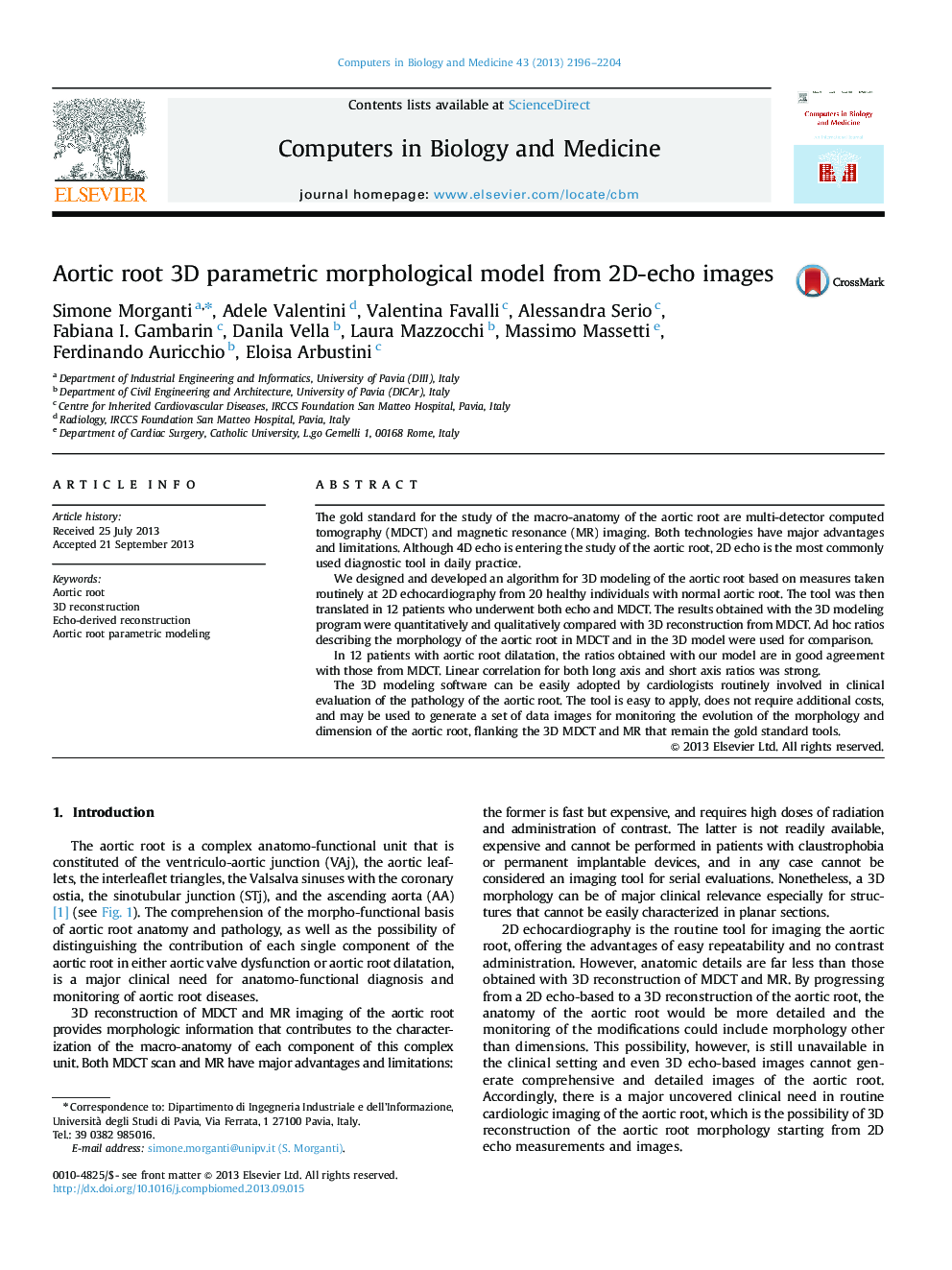| Article ID | Journal | Published Year | Pages | File Type |
|---|---|---|---|---|
| 505072 | Computers in Biology and Medicine | 2013 | 9 Pages |
The gold standard for the study of the macro-anatomy of the aortic root are multi-detector computed tomography (MDCT) and magnetic resonance (MR) imaging. Both technologies have major advantages and limitations. Although 4D echo is entering the study of the aortic root, 2D echo is the most commonly used diagnostic tool in daily practice.We designed and developed an algorithm for 3D modeling of the aortic root based on measures taken routinely at 2D echocardiography from 20 healthy individuals with normal aortic root. The tool was then translated in 12 patients who underwent both echo and MDCT. The results obtained with the 3D modeling program were quantitatively and qualitatively compared with 3D reconstruction from MDCT. Ad hoc ratios describing the morphology of the aortic root in MDCT and in the 3D model were used for comparison.In 12 patients with aortic root dilatation, the ratios obtained with our model are in good agreement with those from MDCT. Linear correlation for both long axis and short axis ratios was strong.The 3D modeling software can be easily adopted by cardiologists routinely involved in clinical evaluation of the pathology of the aortic root. The tool is easy to apply, does not require additional costs, and may be used to generate a set of data images for monitoring the evolution of the morphology and dimension of the aortic root, flanking the 3D MDCT and MR that remain the gold standard tools.
